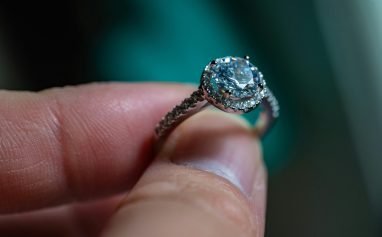The Comprehensive History of Jewelry: From Ancient Times to Modern Day
Jewelry has been a significant part of human culture for thousands of years, evolving from simple adornments to complex expressions of art, status, and personal identity. From the ancient civilizations to modern fashion houses, the journey of jewelry is as fascinating as it is diverse. This comprehensive history explores the pivotal moments and styles that have shaped jewelry over millennia.
Ancient Beginnings: Symbolism and Status
Jewelry’s roots trace back to ancient times when early humans used natural materials like shells, bones, and stones to create adornments. These primitive pieces served not only decorative purposes but also symbolized power, spirituality, and social status.
1. Ancient Egypt:
One of the earliest and most influential civilizations in jewelry history is ancient Egypt. The Egyptians believed jewelry had magical properties, providing protection and ensuring good fortune in the afterlife. Gold, considered the flesh of gods, was the metal of choice, often inlaid with colorful gemstones like turquoise, lapis lazuli, and carnelian. The iconic scarab beetle, eye of Horus, and ankh symbols became timeless designs that still inspire modern pieces.
2. Mesopotamia:
In Mesopotamia, jewelry design reached new levels of sophistication. Craftsmen used gold and silver to create intricate earrings, necklaces, and headpieces, often adorned with precious stones. These pieces were not only worn for personal adornment but also buried with the dead to honor their journey into the afterlife.
3. Ancient Greece and Rome:
Greek and Roman jewelry reflected their love for beauty and mythology. Greek artisans mastered the art of metalwork, creating delicate gold wreaths, earrings, and bracelets inspired by nature and mythology. Romans, on the other hand, popularized the use of gemstones, with emeralds, sapphires, and pearls becoming highly sought after. Cameos and intaglios, featuring engraved portraits and scenes, were prized possessions.
The Middle Ages: Devotion and Decoration
During the Middle Ages, jewelry took on religious significance. The church exerted considerable influence, and much of the jewelry from this period featured Christian symbols and relics.
1. Byzantine Empire:
The Byzantine Empire continued the tradition of using jewelry as a display of wealth and religious devotion. Elaborate designs incorporating gold, enamels, and precious stones were common, with motifs often depicting Christian iconography.
2. Medieval Europe:
In medieval Europe, jewelry became more accessible to the emerging middle class. Sumptuary laws regulated who could wear what, ensuring that only the nobility could adorn themselves with precious metals and stones. Jewelry pieces from this era often featured intricate metalwork and gemstone settings, reflecting the wearer’s social status and wealth.
The Renaissance: Revival and Innovation
The Renaissance period saw a revival of classical themes and a surge in artistic innovation. Jewelry became more ornate, with a focus on craftsmanship and detail.
1. Italian Renaissance:
Italy, particularly Florence and Venice, became the epicenter of Renaissance jewelry. Goldsmiths like Benvenuto Cellini created masterpieces that blended artistry with technical skill. The use of enameling and intricate filigree work became hallmarks of Renaissance jewelry.
2. Tudor England:
In Tudor England, jewelry was a symbol of power and influence. Monarchs like Henry VIII and Elizabeth I adorned themselves with lavish jewels, including pearls, diamonds, and rubies. Portrait miniatures set in elaborate frames became popular as tokens of affection and political alliances.
The 18th and 19th Centuries: Elegance and Expansion
The 18th and 19th centuries marked significant changes in jewelry design, driven by cultural shifts and technological advancements.
1. Georgian Era:
The Georgian era was characterized by intricate designs and the use of colored gemstones. Romanticism influenced jewelry themes, with motifs like hearts, flowers, and bows becoming popular. Georgian jewelry often featured closed-back settings, enhancing the brilliance of the stones.
2. Victorian Era:
The Victorian era, named after Queen Victoria, witnessed diverse jewelry styles, from the sentimental pieces of the Romantic Period to the opulent designs of the Grand Period. Mourning jewelry, made from jet and featuring lockets of hair, became a poignant trend following the death of Prince Albert.
3. Art Nouveau:
The Art Nouveau movement at the turn of the 20th century embraced organic forms and flowing lines. Artists like René Lalique created jewelry that celebrated nature, incorporating enamel, glass, and unconventional materials.
The 20th Century and Beyond: Modernism and Innovation
The 20th century brought radical changes to jewelry design, influenced by art movements, technological advances, and shifting societal norms.
1. Art Deco:
The Art Deco movement of the 1920s and 1930s introduced sleek, geometric designs and bold color contrasts. Platinum became the metal of choice, often set with diamonds, emeralds, and sapphires. Jewelry from this era reflected the spirit of modernity and luxury.
2. Mid-20th Century:
The mid-20th century saw the rise of iconic jewelry houses like Tiffany & Co., Cartier, and Bulgari. These brands revolutionized jewelry design, blending tradition with innovation. The introduction of new techniques, such as the use of pavé settings and invisible mounts, allowed for more creative and intricate designs.
3. Contemporary Jewelry:
Today, jewelry design continues to evolve, embracing new materials, technologies, and cultural influences. Sustainable and ethical practices are becoming increasingly important, with a focus on responsibly sourced gemstones and recycled metals. Designers are also exploring the use of 3D printing and other advanced technologies to push the boundaries of traditional craftsmanship.
Conclusion
The history of jewelry is a testament to human creativity, cultural expression, and technological advancement. From ancient civilizations to modern-day masterpieces, each era has contributed to the rich tapestry of jewelry design. As we continue to innovate and explore new possibilities, the allure of jewelry remains timeless, celebrating both our heritage and our endless capacity for artistic expression.

Brijesh brings a decade of experience in SEO and a deep love for jewelry to his writing. He excels at creating content that shines both on the page and in search engines, ensuring every story about gems and craftsmanship reaches the right audience.




